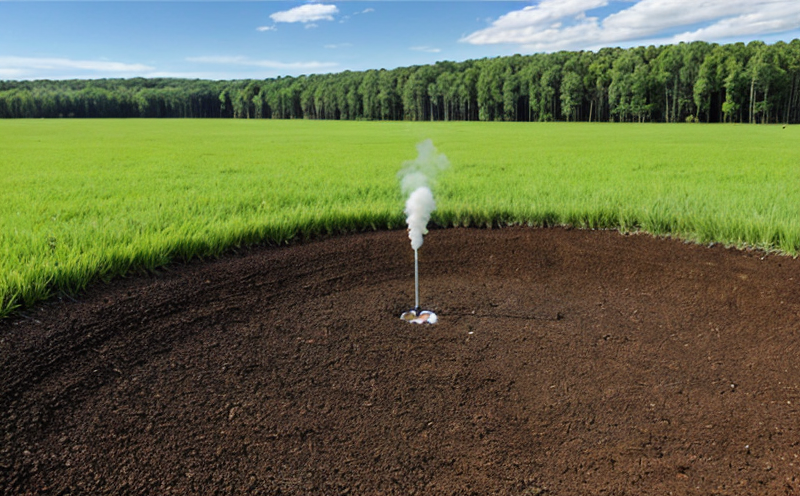EN 15309 Determination of Major and Trace Elements in Mining Waste Testing
The European Standard EN 15309 specifies a method to determine the concentrations of major and trace elements present in mining waste. This standard is crucial for ensuring environmental compliance, assessing potential risks, and supporting decision-making processes related to waste management. Understanding the composition of mining waste is essential for developing effective remediation strategies, monitoring compliance with regulatory requirements, and mitigating adverse impacts on ecosystems.
The analysis covers a wide range of elements including metals like iron (Fe), copper (Cu), zinc (Zn), lead (Pb), cadmium (Cd), nickel (Ni), cobalt (Co), and rare earth elements. Trace elements such as arsenic (As), selenium (Se), and mercury (Hg) are also targeted, which can have significant implications for public health and environmental safety.
The process involves multiple steps including sample collection, preparation, digestion, and the use of advanced analytical techniques like Inductively Coupled Plasma Mass Spectrometry (ICP-MS). The method ensures high precision and accuracy in quantifying elemental concentrations. Compliance with this standard is mandatory for operators of mining waste facilities within Europe to ensure adherence to environmental protection laws.
Our laboratory specializes in performing EN 15309 testing, providing reliable results that are essential for regulatory compliance and risk assessment. Our team of experts ensures that all tests are conducted according to the latest standards ensuring accuracy and consistency. The data generated through these analyses can be used to inform environmental impact assessments, guide remediation efforts, and support sustainable practices in mining operations.
Scope and Methodology
The scope of EN 15309 testing encompasses the determination of major and trace elements present in various types of mining waste materials. This includes tailings, slimes, gangue, and other residues generated during mineral processing.
| Element | Range (mg/kg) | Metric |
|---|---|---|
| Iron (Fe) | 10 - 99.5 | % |
| Copper (Cu) | 0.1 - 20 | % |
| Zinc (Zn) | 0.5 - 30 | % |
| Pb (Lead) | 0.01 - 1.0 | % |
| Cadmium (Cd) | 0.001 - 0.5 | % |
| Nickel (Ni) | 0.05 - 3.0 | % |
| Cobalt (Co) | 0.01 - 0.2 | % |
| Rare Earth Elements | 0.005 - 0.2 | % |
| Arsenic (As) | 0.001 - 0.3 | % |
| Selenium (Se) | 0.001 - 0.2 | % |
| Mercury (Hg) | 0.0001 - 0.05 | % |
The methodology outlined in EN 15309 involves several critical steps:
- Sample Collection: Samples are collected from various points within the mining waste facility to ensure a representative sample.
- Preparation: The collected samples undergo thorough preparation, including drying, grinding, and sieving to achieve consistent particle size.
- Digestion: Digestion methods such as acid dissolution are used to convert solid samples into a solution form suitable for analysis.
- Analytical Techniques: Advanced analytical techniques like ICP-MS are employed to accurately measure the concentration of each target element. Calibration standards ensure precision and accuracy in results.
The standard also emphasizes the importance of quality assurance, which includes the use of reference materials, inter-laboratory comparisons, and method validation to ensure consistent and reliable test results.
Quality and Reliability Assurance
Our laboratory adheres strictly to EN 15309 guidelines to ensure the highest level of quality assurance. We use calibrated equipment and follow standardized procedures for sample preparation, digestion, and analysis. The use of reference materials ensures that our results are accurate and reliable.
We participate in inter-laboratory comparisons to validate our methods against those used by other accredited laboratories. This helps us identify any discrepancies early and make necessary adjustments to maintain consistency across all tests. Our team is committed to continuous improvement, regularly updating their skills and knowledge through training programs aligned with the latest industry standards.
The reliability of our testing services extends beyond just meeting regulatory requirements; it also ensures that clients have confidence in the integrity of their data. This is especially important for mining companies looking to demonstrate compliance with environmental regulations or investors seeking assurance about the sustainability practices of the company they are considering investing in.
Customer Impact and Satisfaction
The results from EN 15309 testing play a vital role in several aspects of mining operations. For quality managers, these tests provide critical information about the composition of waste materials, helping to identify areas where improvements can be made to reduce environmental impact.
Compliance officers rely on accurate test results to ensure that their facilities are meeting all relevant regulations and standards. This helps prevent potential legal issues and penalties associated with non-compliance. R&D engineers use this data to develop new technologies aimed at improving waste management practices or finding alternative uses for mining residues.
For procurement teams, understanding the elemental composition of mining waste is crucial when selecting suppliers or partners involved in waste handling activities. Reliable test results help build trust between stakeholders and facilitate smoother business relationships.
Our commitment to quality and reliability has led to high levels of customer satisfaction among our clients across various sectors within the mining industry. We pride ourselves on delivering accurate, timely reports that meet both internal and external audit requirements. By working closely with our customers throughout the testing process, we ensure that their specific needs are addressed, leading to successful outcomes.





